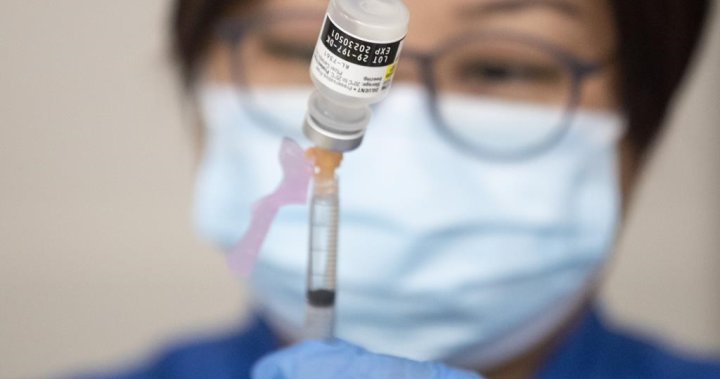
COVID-19 vaccination rate lower among urban Indigenous people, study shows. Why?
Global News
Despite prioritization, COVID-19 vaccine uptake for First Nations, Inuit and Métis people in Toronto and London was 20 per cent lower than the overall population, new study shows.
COVID-19 vaccination rates among Ontario’s urban Indigenous population were lower compared with the general population despite priority rollout, according to a new study.
The research published in the Canadian Medical Association Journal (CMAJ) on Tuesday found that between March 2020 and December 2021, the two-dose COVID-19 vaccine uptake for First Nations, Inuit and Métis people living in Toronto and London, Ont., was 20 per cent lower than the overall population.
However, the study also showed that COVID-19 testing rates in the two cities were 10 per cent higher among the Indigenous community compared with local and provincial rates.
Researchers looked at data including 1,087 Indigenous people above the age of 15 in Toronto and London.
“Indigenous people were one of the three very first priority groups for access to vaccine in Ontario, along with health-care workers and people that were living in long-term care homes, but despite that prioritization, we’re actually still seeing significant gaps,” said co-author Janet Smylie, who is a family doctor at St. Michael’s Hospital and professor at the University of Toronto.
Booster rates for third doses also continue to lag significantly for this group, she said.
Barriers in access to culturally safe health centres, systemic racism in hospitals and a lack of trust in biomedicine due to discriminatory colonial policies were responsible for the lower vaccine coverage, Smylie said.
As of last week, more than 86 per cent of Canadians aged five and up have been fully vaccinated with two doses. And nearly half the total population has been boosted with a third dose.
